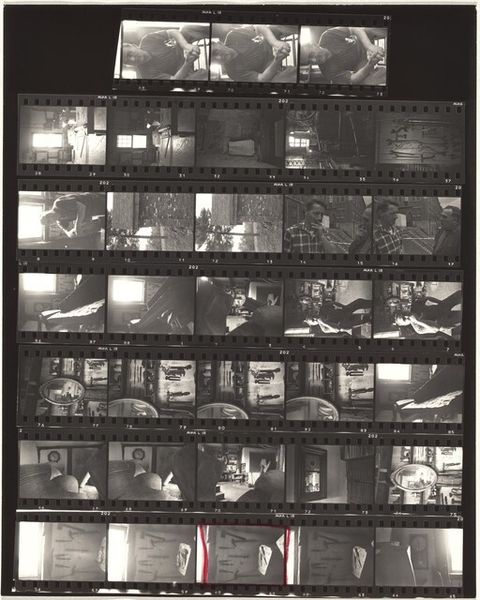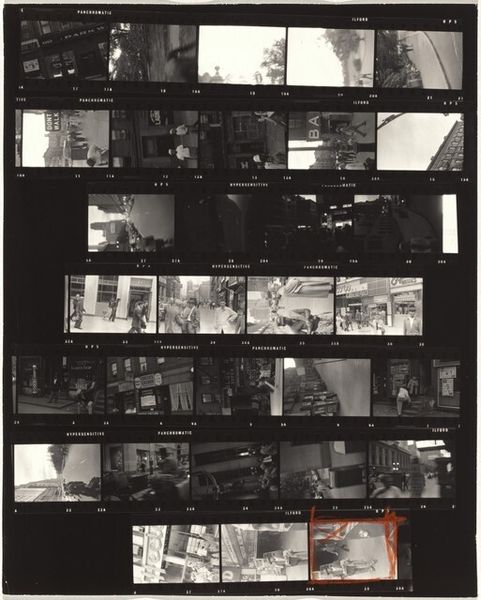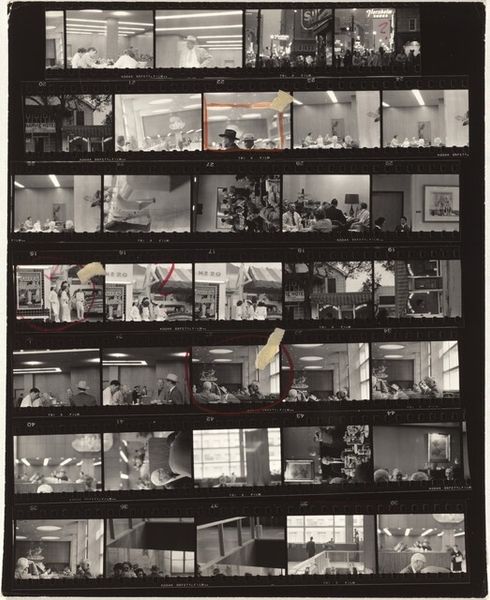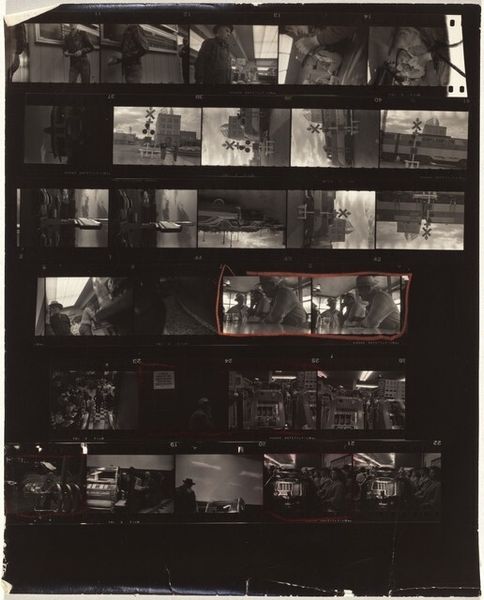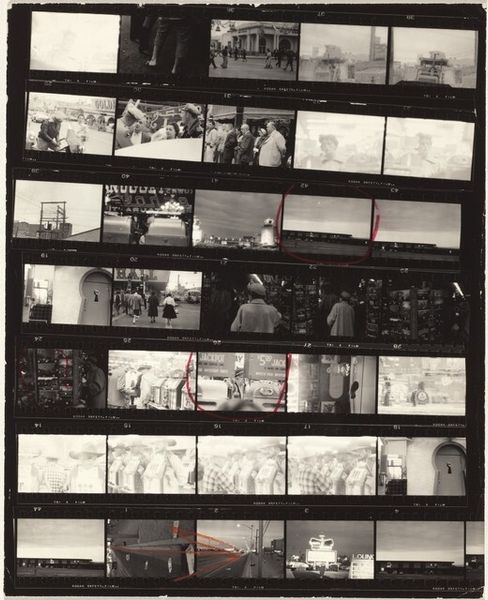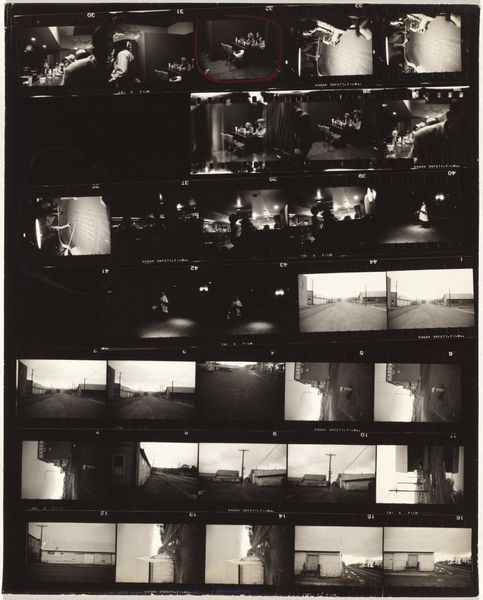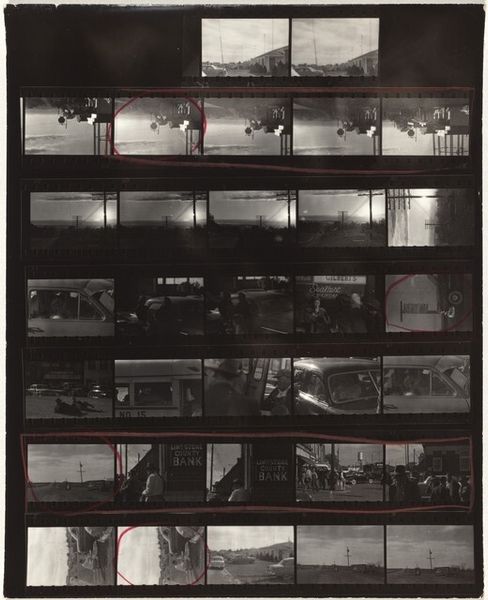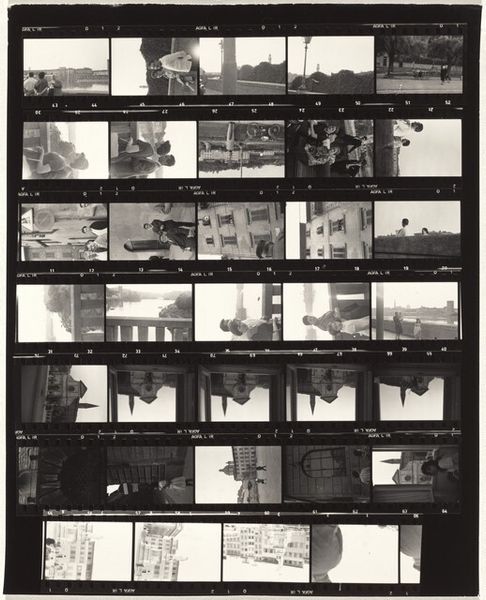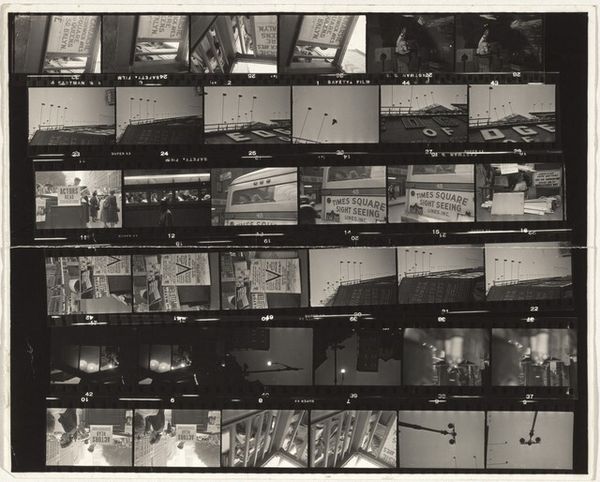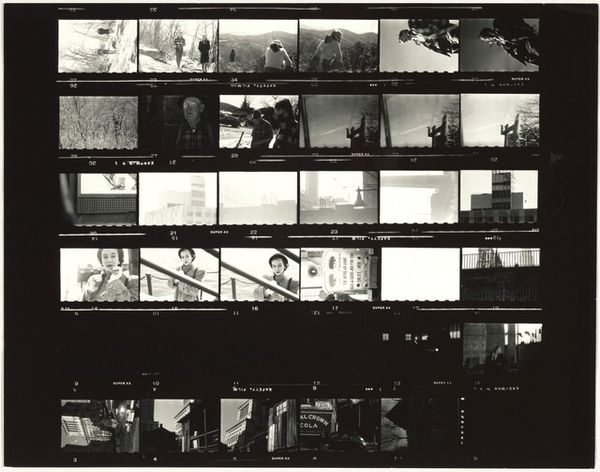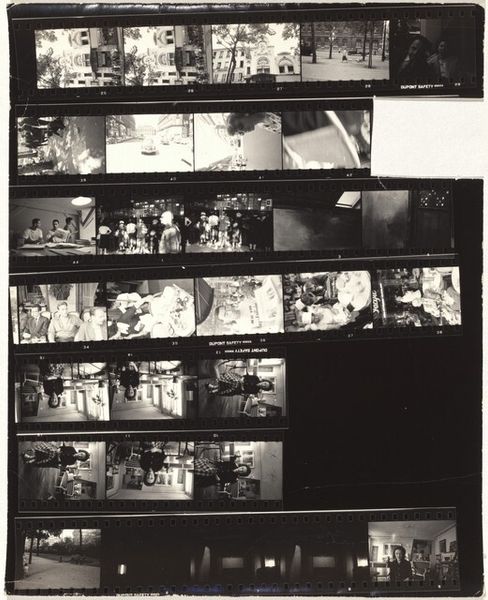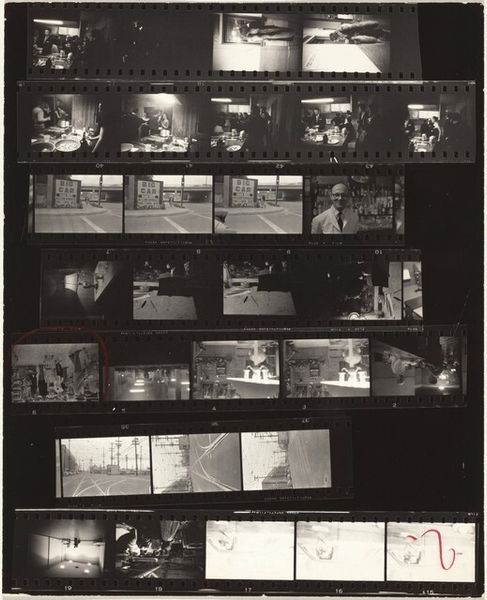
#
excavation photography
#
film photography
#
wedding photography
#
dark hue
#
dark monochromatic
#
couple photography
#
monochrome photography
#
film
#
celebration photography
#
shadow overcast
Dimensions: overall: 25.3 x 20.4 cm (9 15/16 x 8 1/16 in.)
Copyright: National Gallery of Art: CC0 1.0
Editor: This is Robert Frank's "Guggenheim 398--Las Vegas, Nevada," taken in 1955, a contact sheet made from film. I find it interesting that this isn't the finished work, but the artist’s process itself that we are examining. What strikes you about it? Curator: The formal arrangement immediately asserts itself. The grid structure, dictated by the contact sheet, creates a serial effect, a rhythmic progression across the frame. Notice how Frank utilizes the inherent properties of the film strip—the sprockets, the frame edges—to contribute to the overall composition. Editor: It's almost like he's not just showing us images, but the *making* of the images. How does that contribute to the meaning? Curator: Precisely. The high contrast in each frame—the stark blacks and whites—emphasizes the photographic process. Each tiny window, when considered together, challenges traditional photographic representation. Observe the use of light. In many frames, there’s an over-exposure creating a kind of flattening. Is Frank manipulating that light and dark contrast to speak about society? Editor: The cityscapes and what appears to be some signage… so he isn’t going for balanced exposure but really creating an uneven emotional tonality. The sprockets feel important too - their repeated shapes highlight this idea. Curator: Indeed. He is drawing our attention not just to *what* is represented, but to the mechanics of representation itself, and perhaps questioning traditional, romantic visions of the American landscape. The materiality of the film strip itself *is* the message here. Editor: I never considered the process as the piece itself. Seeing the individual frames this way shifts my entire perception. Curator: Yes, it moves us beyond subject matter into a more nuanced understanding of the artist's method, his critical gaze, and ultimately, the construction of meaning through the photographic medium itself. We find an artist asking philosophical questions of his art form.
Comments
No comments
Be the first to comment and join the conversation on the ultimate creative platform.
